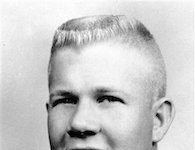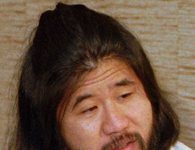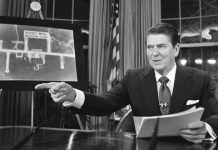On February 13, 1633, Galileo arrived in Rome to be tried for promoting Copernican theories, such as the revolutionary idea that the Earth orbits the sun.
Galileo Punished for Book on Copernican Views
During Galileo’s lifetime, the accepted theory of the cosmos came from Aristotle and Ptolemy. Their ideas, which were seemingly confirmed by scripture, claimed that the sun, the planets and the stars revolved around a stationary Earth.
But in 1543, the year of his death, Polish astronomer Nicolaus Copernicus published “Revolutions of the Celestial Orbs,” which argued that it was the Earth that orbited the Sun. The theory did not win much attention until the 17th century.
Galileo drew distrust and criticism from friends, academics and clergymen when he expressed his support for Copernicus’ theory. He invented the telescope in 1609 and, with the ability to closely observe the planets and stars, he became more confident that Copernicus was right.
In a December 1613 letter, Galileo wrote that the scriptures should not be read literally, but figuratively. Such views did not endear him to the religious establishment. In 1616, he was ordered to renounce his opinions about the universe. He allegedly agreed to the injunction.
Galileo refrained from publicizing his views until the more science-friendly Pope Urban VIII replaced Pope Paul V in 1623. He began working on a new book, “Dialogue Concerning the Two Chief World Systems,” which explained the Copernican theory and the Church’s views, but heavily implied that Copernicus was right.
The book, published in February 1632, was popular with the public, but the church objected to its preference for the Copernican theory. In September, the Inquisition accused Galileo of violating the injunction of 1616 and ordered him to Rome.
Galileo faced a trial before 10 cardinals in April 1633. Hoping for a lightened sentence, he agreed to renounce his views: “I held, as I still hold, as most true and indisputable, the opinion of Ptolemy, that is to say, the stability of the Earth and the motion of the Sun.”
The cardinals reached their decision on June 22, 1633: “We pronounce, judge, and declare, that you, the said Galileo…have rendered yourself vehemently suspected by this Holy Office of heresy, that is, of having believed and held the doctrine (which is false and contrary to the Holy and Divine Scriptures) that the sun is the center of the world, and that it does not move from east to west, and that the earth does move, and is not the center of the world.”
Galileo was sentenced to prison and his book was banned. He was allowed to serve his time in house arrest, where he remained until his death in 1641.
The University of Missouri-Kansas City School of Law has a collection of primary sources related to Galileo’s trial, as well as the text of “Dialogue Concerning the Two Chief World Systems.”
Sources in this Story
- The University of Missouri-Kansas City School of Law: Trial of Galileo Galilei
- Fordham University: Modern History Sourcebook: The Crime of Galileo: Indictment and Abjuration of 1633
- Rice University: The Galileo Project: Galileo’s Biography
- PBS: NOVA: Galileo’s Battle for the Heavens
- New York Times: After 350 Years, Vatican Says Galileo Was Right: It Moves
Background: Galileo’s Life and Work
Born in the Italian city of Pisa in 1564, Galileo claimed a number of discoveries during his lifetime, studying time intervals, motion and first theorizing that, regardless of their weight, objects fell at the same speed in a vacuum.
He developed the refractor telescope—one of two standard telescopes used today alongside Sir Isaac Newton’s reflector—and used it to discover sunspots and Jupiter’s four moons, see a supernova and show Copernicus’ ideas to be correct.
Perhaps Galileo’s greatest contribution to science, according to biographer Dava Sobel, was his use in mathematics in the study of science. “Galileo correctly envisioned the experimental, mathematical analysis of Nature as the wave of the future,” she writes, noting that Albert Einstein dubbed Galileo “the father of modern physics—indeed of modern science altogether.”
The Vatican Apology
It took more than 350 years, but the Vatican in 1992 acknowledged that Galileo was correct. The Vatican had removed “Diaglogue Concerning the Two Chief World Systems” from a banned publications list in 1757.











